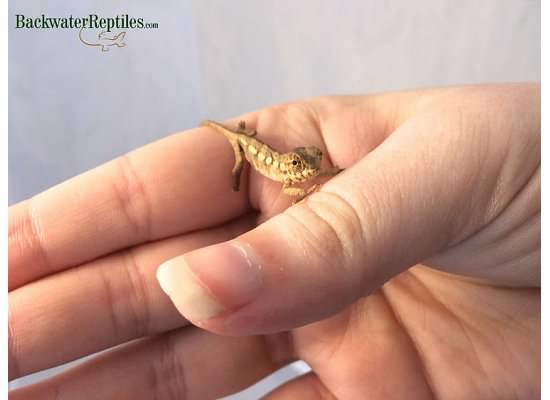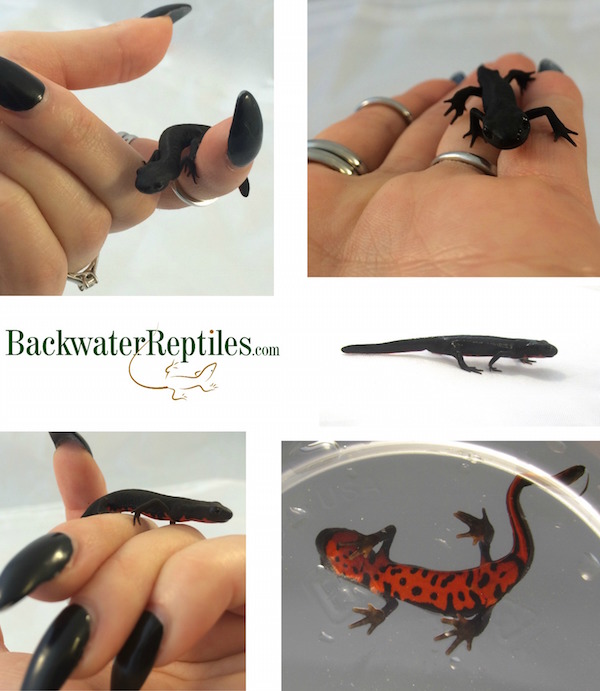Your hatchling Eastern Box Turtle (Terrapene c. carolina) just arrived in the mail. Now you’re wondering how to care for your new little turtle friend. No worries – at Backwater Reptiles, we get loads of questions about how to best care for the animals we ship out, so we’re happy to tell you all about what we recommend in order to keep your little reptilian friend happy and healthy.
Right off the bat, your hatchling Eastern box turtle will obviously need a home in which to thrive. As they mature, the box turtles will do best when kept in outdoor pens (at least if you live where the weather permits this), but when they are under a year old, it is best to keep the little turtles in an indoor enclosure. Indoors they will be safe from neighborhood roaming pets, predatory birds, and other natural threats. Plus because they will be more sensitive to temperature fluctuations when young, you can better control their climate indoors. Another good reason to keep them indoors while they’re small is that you can better keep an eye on the food they are eating and make sure that they are getting the proper nutrients.

Baby Box turtle care
The hatchlings we sell at Backwater Reptiles are small enough to live in a ten or 20 gallon tank for the first year of their life. If you have multiple baby turtles in the same home, then the size of the enclosure will need to be bigger. You’ll need a proper heat lamp as well as a proper UV light, even if you take your turtle outdoors from time to time. Make sure that one side of their home is “sunny” with heat as well as a full-spectrum UV light.
If you’re new to reptile care and husbandry, it’s important that you know that the entire habitat cannot be hot and “sunny” – all reptiles need a cooler side of the enclosure to retreat to. You wouldn’t enjoy spending all your time in the heat and sun, would you? Neither will your baby box turtle. This allows them to thermoregulate their body temperature.

Your hatchling box turtle will eat protein as well as veggies, but make sure that it has access to both. When they are little, they need more protein to allow them to grow, but they do still require plenty of leafy greens to supplement. Their diets tend to be more carnivorous at this young age.
As with many young reptiles, variety in the diet is important. You can feed the little turtle small crickets, turtle pellets, wax worms, meal worms, and any other insect that they can catch. As far as vegetation goes, dark leafy greens are always a good bet. Veggies like kale, collard greens, and spinach contain a lot of nutrients and your baby box turtle will love them.

It’s important to note that like human beings, baby box turtles don’t all look the same. They have color variations and their markings can appear different from turtle to turtle. Some will have very dark shells and some will have lighter shells with more visible yellow tones – it’s all normal box turtle coloring.
Making sure your baby Box turtle has a damp hide spot is extremely important–do not ignore this advice! If you allow them to become dry, their eyes will seal, and they will begin to dessicate (dehydrate). It can lead to their death quickly.
We provide damp sphagnum moss on the cool side of the enclosure–always make sure it’s quite damp, but not soaking wet. They will bury themselves in this for part of the day. They tend to eat in the morning, and retire for the rest of the day. As babies, they lose hydration very quickly and their shells haven’t completely hardened, and their skin isn’t as thick as it will be as they mature.
Backwater Reptiles currently has an assortment of hatchling Eastern Box Turtles for sale. We love knowing that they go to homes with educated owners, so ask us questions in the comments if you have any.




